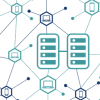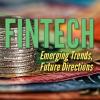Strategic advice to leverage new technologies
Technology is at the heart of nearly every enterprise, enabling new business models and strategies, and serving as the catalyst to industry convergence. Leveraging the right technology can improve business outcomes, providing intelligence and insights that help you make more informed and accurate decisions. From finding patterns in data through data science, to curating relevant insights with data analytics, to the predictive abilities and innumerable applications of AI, to solving challenging business problems with ML, NLP, and knowledge graphs, technology has brought decision-making to a more intelligent level. Keep pace with the technology trends, opportunities, applications, and real-world use cases that will move your organization closer to its transformation and business goals.
Insight
Diarmuid Lane looks at text- versus voice-based question answering (QA) systems in financial services. He explores a larger question: how efficient are chatbots, really?
Magesh Kasthuri looks at blockchain’s impact on fintech. The article delves into the analysis of a specific technology; perhaps one of the most foundational technologies in the fintech basket. Kasthuri discusses the inevitability of BaaS and its security concerns.
Based on findings from a Cutter Consortium survey examining the adoption and application of AI technology, this article looks at six AI adoption drivers in banking and financial services: (1) competition; (2) the availability of massive data sets; (3) the growing number of commercial AI-based applications; (4) innovation among the players; (5) a growing understanding and appreciation of the potential of AI, ML, and natural language processing (NLP); and (6) increasingly sophisticated user interfaces and customer experience/engagement.
The authors take a detailed look at fintech and marketing and how big data, analytics, marketing, and financial services can be leveraged.
This article focuses primarily on the financial services industry, noting the importance of connectivity, digital assets, and regulation. The authors recognize the opportunities and disruptions that fintech creates. They look at how incumbents must respond opportunistically and defensively to fintech adoption.
This issue of Cutter Business Technology Journal (CBTJ) describes the range of methods, tools, techniques, and applications of the fintech revolution. The articles demonstrate fintech’s importance and explore the different levels of fintech technologies, experimentation, and applications. While many questions remain, fintech is unstoppable. Institutions, companies, and whole countries are adopting it for financial, political, and even military purposes. Make no mistake: fintech is a game-changer.
Software Development: Can Technology Help Us Automate the Work?
Many technologies exist today that have the potential to change the manner in which we get work done. Currently, the software developer job is heavily labor-intensive. Yes, we use software tools to perform many of the repetitive tasks; however, for the most part, the programming job is performed by highly talented individuals who specify, design, code, and test complex pieces of code and make them work. We have attempted to automate such tasks, but we can best characterize current efforts as assistance (helping workers by providing guidance and information) rather than automation (replacing humans with machines). In this Executive Update, we identify 20 technologies that have the potential to alter this picture in both the near and long term.
This Advisor considers the development of a continuous deployment process for software by combining Agile methods and DevOps. After first looking at the salient characteristics of both techniques, we discuss why bringing together Agile and DevOps — and the resultant continuous delivery and deployment chain — is truly worthwhile.























